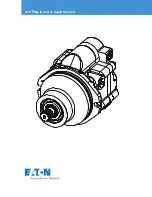
8.16
Section 8
Electrical System and Components
Troubleshooting Guide 15 amp Regulated Battery Charging System.
NOTE: Zero ohmmeters on each scale to ensure accurate readings. Voltage tests should be made with engine
running at 3600 RPM - no load. The battery must be fully charged.
Problem
Test
Conclusion
1. Trace B+ lead from rectifier-regulator to key
switch, or other accessible connection.
Disconnect it from switch or connection.
Connect an ammeter from loose end of B+
lead to positive terminal of battery. Connect
DC voltmeter from loose end of B+ lead to
negative terminal of battery. See Figure 8-9.
With engine running at 3600 RPM, read
voltage on voltmeter.
If voltage is 13.8 volts or more, place a
minimum load of 5 amps* on battery to
reduce voltage. Observe ammeter.
*NOTE: Turn on lights, if 60 watts or more.
Or place a 2.5 ohm, 100 watt
resistor across battery terminals.
1. If voltage is 13.8-14.7 and charge rate
increases when load is applied, the charging
system is OK and battery was fully charged.
If voltage is less than 13.8 or charge rate does
not increase when load is applied, test stator
(Tests 2 and 3).
2. Remove connector from rectifier-regulator.
With engine running at 3600 RPM, measure
AC voltage across stator leads using an AC
voltmeter.
2. If voltage is 28 volts or more, stator is OK.
Rectifier-regulator is faulty. Replace the
rectifier-regulator.
If voltage is less than 28 volts, stator is
probably faulty and should be replaced. Test
stator further using an ohmmeter (Test 3).
No
Charge
to
Battery
3a. With engine stopped, measure the resistance
across stator leads using an ohmmeter.
3a. If resistance is 0.1/0.2 ohms, the stator is OK.
If the resistance is infinity ohms, stator is
open. Replace stator.
3b. With the engine stopped, measure the
resistance from each stator lead to ground
using an ohmmeter.
3b. If the resistance is infinity ohms (no
continuity), the stator is OK (not shorted to
ground).
If resistance (or continuity) is measured, the
stator leads are shorted to ground. Replace
stator.
1. If the voltage is 14.7 volts or less the charging
system is OK. The battery is unable to hold a
charge. Service battery or replace as
necessary.
If voltage is more than 14.7 volts, the
rectifier-regulator is faulty. Replace
rectifier-regulator.
1. Perform same test as step 1 above.
Battery
Continuously
Charges at
High Rate
Summary of Contents for COMMAND CV11
Page 1: ...1 COMMAND SERVICE MANUAL VERTICAL CRANKSHAFT CV11 16 CV460 465 CV490 495...
Page 20: ...2 4 Section 2 Special Tools...
Page 28: ...4 4 Section 4 Air Cleaner and Air Intake System...
Page 54: ...6 6 Section 6 Lubrication System...
Page 109: ...9 15 Section 9 Disassembly 9 Regulating Pin Governor Gear Figure 9 53 Removing Governor Gear...
Page 110: ...9 16 Section 9 Disassembly...
Page 146: ...1 COMMAND SERVICE MANUAL VERTICAL CRANKSHAFT CV11 16 CV460 465 CV490 495...
Page 148: ......
















































